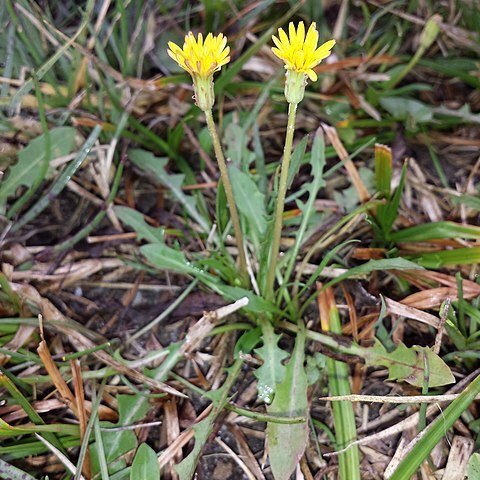Leaves up to 10 cm long, narrowly oblong in outline, lobes 4-5, triangular, tips blunt, patent or slightly recurved, upper margins slightly convex, all margins entire, petiole short, not winged. Scapes up to 13 cm long in fruit, white woolly, glabrescent. Heads narrow, c. 2 cm across when fully expanded. Inner involucral bracts 9-10 mm long, margins white-membranous, outer bracts c. 3.5 x 1 mm, appressed. Ligules yellow. Style branches yellow, pollen present. Achenes buff-coloured, 3.5 mm long, cone 0.5-0.75 mm, beak 4.25-5.25 mm. Pappus buff-coloured.
Acaulescent perennial herb. Leaves up to 100 mm long, narrowly oblong in outline, lobes 4 or 5, triangular, tips blunt, patent or slightly recurved, all margins entire, petiole short, not winged. Outer involucral bracts ± 3.5 mm long, erect. Flowers yellow.
A herb. It grows 8-17 cm tall. The leaves tend to lie along the ground. The leaves are narrowly sword shaped and 8-18 cm long by 2-3 cm wide. There can be teeth or lobes along the edge. The flower heads are 1-2 cm wide.

